Energy Communities, are they the future?
As the load on the grid increases due to the rise of Evs and the proliferation of electrical appliances in our households, solutions must be found to use this energy more consciously. Energy Communities (EC) are one of many solutions, and they might be the future.
In an Energy Community, there are parties that generate (green) energy which can be distributed in a community. Following the New European Commission directives (2018/2001 & the latest revised 2019/944) Energy Communities organize collective and citizen-driven energy actions that help pave the way for a clean energy transition, while moving citizens to the fore.
For example: a neighbour that generates a lot of energy with his solar panels, can sell that energy to other neighbourhood inhabitants. Or a company could install a windmill to supply a nearby neighbourhood with energy.
Because this energy is produced and distributed locally, the network of a DGO (grid operator) is spared from excessive strain, as the energy travels only a short distance through their cable network.
Today, there are two ways in which traditional, individual energy production and consumption occurs, namely:
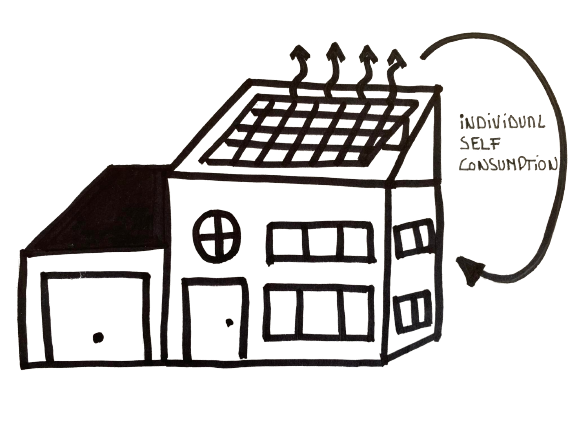
With individual self-consumption, residential customers generate energy by using, for example, solar panels. The created energy will be consumed entirely by themselves.
If their solar panels do not generate enough energy during their peak hours, they can still use energy from the grid.
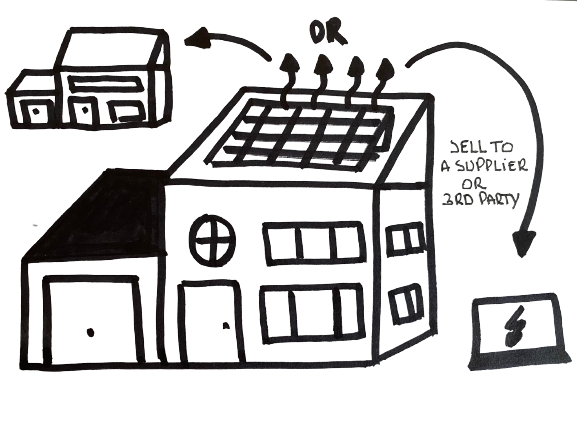
If the people with solar panels are unable to consume the energy they generate, they have the option of selling it to a supplier or other parties. This through the use of smart meters.
However, new commercial models are emerging when we talk about Energy Communities. They have a focus on collectively producing and consuming (renewable) energy.
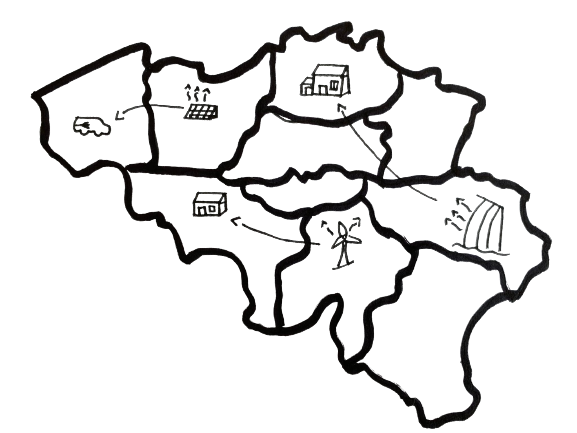
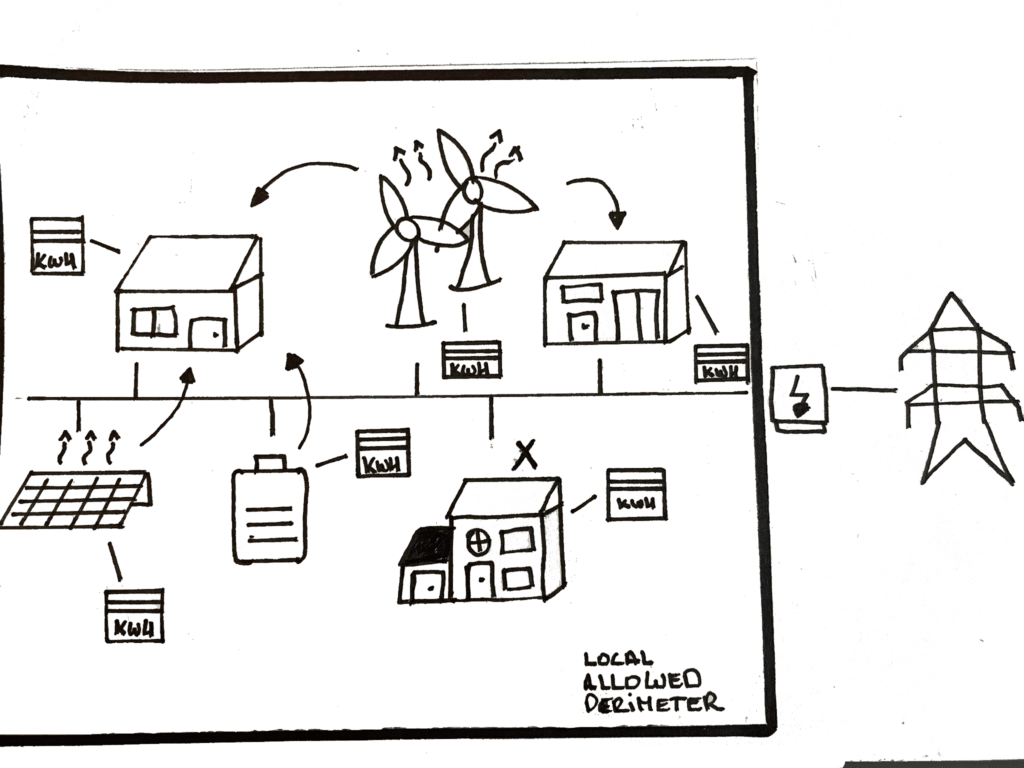
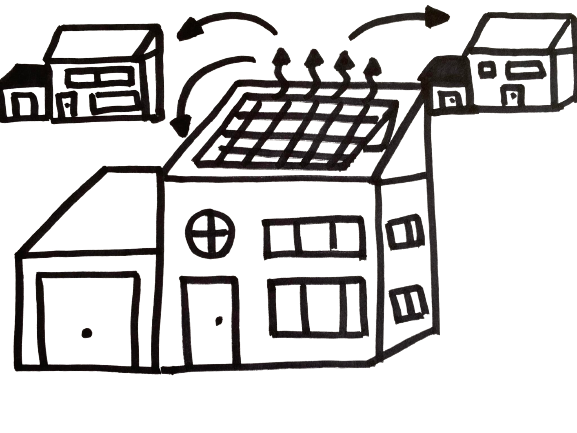
Peer-to-peer is the simplest form of a Energy Community. Here, a (small) end user generates renewable energy and sells it to another (small) end user. The generating end user can decide if he wants to sell the energy directly to another neighbour or via a certified 3rd party.
Peer-to-peer can appear in different ways: One-to-one, one-to-many, many-to-many, many-to-one. An agreement on price and volume is necessary, and a smart meter on all sides is required.
When supporting this commercial model as a supplier, you need to keep complexity outside your MDM solution. It is therefore important to foresee an interface to P2P platform.
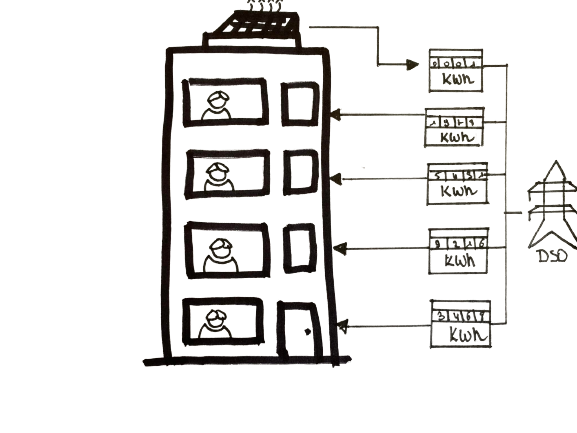
This Local Energy Community focuses on individuals living in a collective, such as residents of a flat building.
When solar panels are placed on top of the roof, all the people living in the building can make use of the energy generated. The renewables self-consumer’s installation may be owned by a third party or managed by a third party. Also here, an agreement on price and volume is necessary.
Currently in Belgium, collective self-consumption is only possible when people have a contract with the same supplier, although this will soon change.
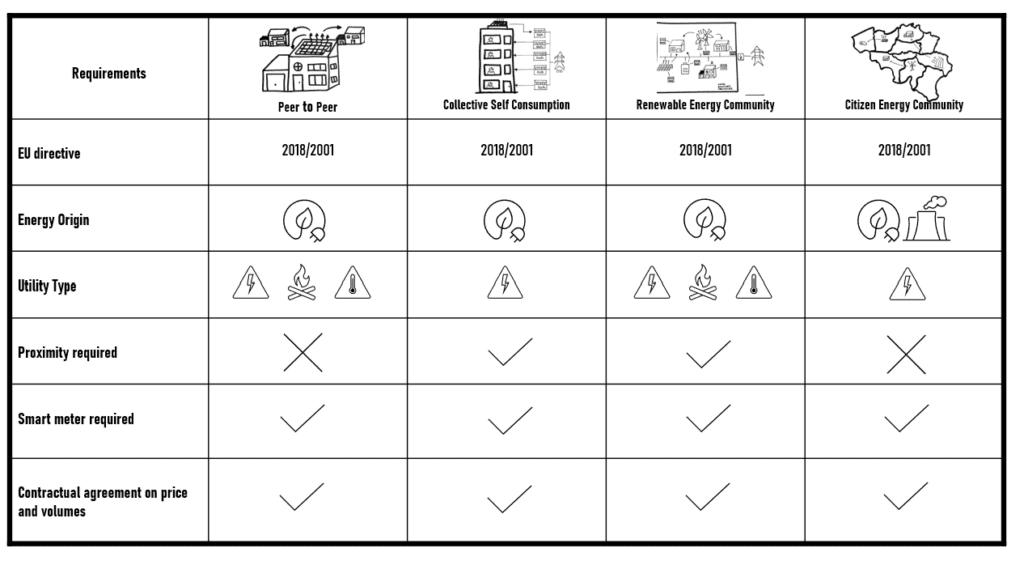
New commercial models, like Energy Communities, come with challenges. As the European Union only provides a framework to enable business to develop a profitable model, there are still quite a few uncertainties regarding the topics below:
Even with an Energy Community, the grid of the DGO is still used. Only, does the energy not travel as far through their cable network compared with a standard energy supply process. Because their grid is being used, and therefore needs to be maintained, a grid fee still applies. The question here is which party will charge this fee to the end consumer and what the price of it would be.
In an EC, there are many roles. You have the end customer, who can step into a community, a legal entity, but also the suppliers and the grid operators. A lot of stakeholders, each of whom can play a role in this process. But how these roles will look like, and who will take on which role and responsibilities? …. It will be a difficult discussion.
As in any form of energy settlement, it is difficult to match what it is produced with what it is consumed at each moment in time. In an EC context, the complexity comes in how to best distribute the energy locally generated within the community. Questions like: what is the most optimal setting for distribution between the community members (fix keys or % participation) and what to do if there is an unbalanced profile consumption are not so straightforward. This adds additional challenges in the contractual phase when setting up these energy communities.
If we put collected data from a collective self consumption model into PowerBI from Microsoft, we immediately see a significant difference.
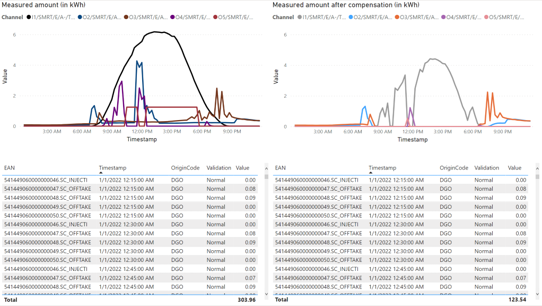
In this graph, we look at the consumption of 4 people living in a flat building. They have each a separate connection. The black line on the left graph is the injection caused by the installed solar panels. The graph on the right (grey line) shows the result of what is compensated.
We can conclude, here, is that person 1 (the brown line on the left graph and the orange line on the right graph) is benefiting the least. He consumes energy outside the hours of the injection of the solar panels and will therefore need to use energy from the grid. This is more expensive to purchase and also places a load on the grid.
The building also has a battery installed (red line on the left graph). So energy that was not consumed can be stored and used later. In this scenario, there is also a mining rack placed in the building. If there is excessive energy and the battery is charged, the remaining energy will be used to mine bitcoins. That way, the residents make optimal use of the energy generated by their EC.
By allowing people to join an Energy Community, the aim is to make them more aware of their energy consumption and thus to make a switch from the peak hours in the evening that overload the grid.
Generating energy and distributing it in a nearby area provides many benefits. Investors earn from it, there is less load on the grid and people are more aware of their energy use.
Renewable energy community, we believe to be the most optimal /efficient form. Due to the densely populated cities, there is little space to install a wind turbine in a neighbourhood. However, many (residential & corporate) roofs can be equipped with solar panels. Batteries can be installed to collect energy when the ratio between generation and consumption is not proportional. This way, residents can enjoy green energy without overloading the grid.
Also, we see peer to peer and collective self consumption communities to have the best chances to be implemented sooner than later. For example, in Belgium, the DGO Fluvius is already providing protocols for its implementations.
Establishing an energy community is not as easy at it seems. As we’ve seen, there are several challenges to overcome when setting up the community, distributing the energy and billing the consumptions. This complexity needs to be taken by the IT solution. At MECOMS we envisioned a system architecture to be as flexible as possible, so the different types of energy communities can be enabled.
Because energy communities operations engage final customers in one or many relationships, from an MDM point of view the relationships related to self-consumption operations will be at the level of the service delivery point, which can either inject energy to the grid, either take energy off the grid, or both.

To enable these self-consumption operations, the IT solution will contain new interfaces between MECOMS core operations and the final customers and the energy communities involved in these operations. The interface will be used for registration, contracting and authorization of these operations. Through this interface, the MECOMS solution can be fed up with static data (final customer identification, fixed volume sharing keys, fixed prices,…) and with dynamic data provided by a 3rd party Energy Management System (dynamic volume sharing, dynamic prices,…).
A second interface will also provide a different type of information to the parties involved in the self-consumption operations, about the self-consumption operation itself.
In a context of, for instance, a Collective Self-consumption community, where the different members live in the same building block, the MECOMS smart metering solution will gather the quarterly smart meter values from the shared solar panels as energy injection and then divide this production based on the predefined key agreed between the members of the community. The contractual setup data will be ingested in the solution to allow the proper distribution and optimization of self-consumption use and to allow the right communication exchange between the different market parties involved.

Having more than 40 years experience in implementing meter data management and customer information solutions for the different actors, at MECOMS we very well understand the complexity of these upcoming scenarios but can use the knowledge to implement the most optimal solution that is resilient and future-proof
Then come and visit our experts at the following events:
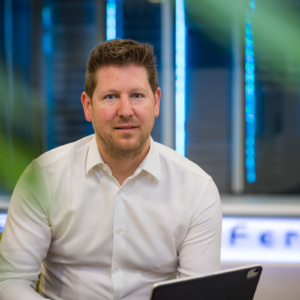
Alex Bongers
Management team
Talk the talk
Stay informed about current events and stay on top of the latest trends for energy suppliers, grid operators, heat-and-water providers.